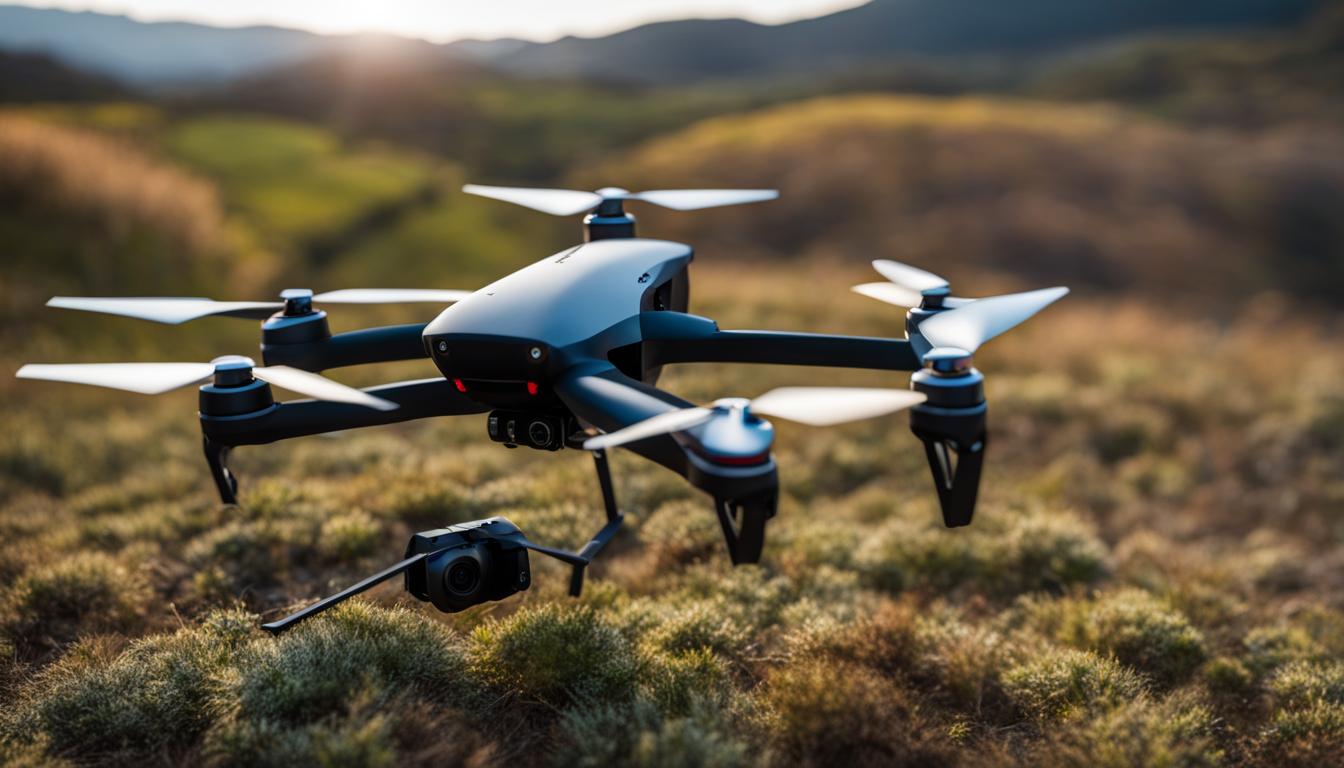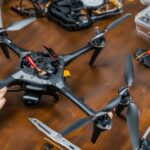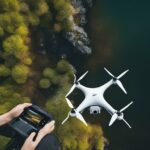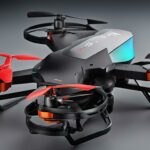Auto-orientation is a valuable feature found in many drones that allows the drone to maintain its position in relation to the ground or other reference points. This feature is particularly useful for keeping the drone under control and ensuring it stays on the desired trajectory. Drones equipped with auto-orientation typically rely on a GPS system to accurately maintain their position. In addition, some drones are equipped with a failsafe that triggers a Return to Home (RTH) function if the drone loses connection with the controller or experiences a loss of power.
Key Takeaways: What Is Auto Orientation On A Drone
- Auto-orientation allows drones to maintain their position in relation to the ground or other reference points.
- GPS technology is used to accurately track the drone’s position and maintain its trajectory.
- Drones with auto-orientation have a failsafe that triggers a Return to Home function if connection is lost or power is low.
- Auto-orientation enhances stability, control, and safety during drone flights.
- Understanding auto-orientation is crucial for aerial photography, videography, and obstacle avoidance.
How Does Auto-Orientation Work?
Auto-orientation is a drone feature that relies on a GPS system to keep the drone in a specific position or trajectory. By using GPS technology, the drone can track its position in relation to the ground or other reference points. When the drone is in auto-orientation mode, it constantly receives signals from the GPS satellites to determine its location. This allows the drone to maintain its position even if it is being pushed by wind or other external factors. The auto-orientation feature also helps the drone return to its starting point if it loses connection with the controller or loses power.
Auto-orientation works hand in hand with the drone’s autopilot system. The autopilot system uses data from various sensors, including the GPS, gyroscope, and accelerometer, to calculate the necessary control inputs to maintain the drone’s orientation. The GPS provides a reference point for the drone’s position, while the gyroscope measures rotation and the accelerometer measures acceleration. This data is then processed by the autopilot system, which adjusts the drone’s motors and propellers to keep it in the desired orientation.
Drone Sensors for Auto-Orientation
Drone sensors play a crucial role in enabling auto-orientation. The GPS sensor provides the necessary location data, allowing the drone to accurately determine its position in relation to the ground. The gyroscope measures rotation rates, providing information on the drone’s angular velocity. This data is used to stabilize the drone and maintain its desired orientation. The accelerometer measures acceleration forces, allowing the drone to adjust its position and maintain stability.
Additionally, some drones may also utilize other sensors such as magnetometers and barometers. Magnetometers measure the Earth’s magnetic field, providing information on the drone’s heading. This helps to ensure accurate positioning and orientation. Barometers measure air pressure, allowing the drone to adjust its altitude and maintain a stable flight.
Quote:
“Auto-orientation is a game-changer when it comes to drone flight control. It allows pilots to focus on capturing amazing footage or executing complex flight maneuvers, without having to constantly worry about manually adjusting the drone’s position. With auto-orientation, drones become more stable, easier to control, and overall safer to fly.” – Drone Enthusiast Magazine
With the integration of advanced drone sensors and technologies, auto-orientation has revolutionized the way drones are flown. It enhances flight stability, enables precise positioning, and reduces the risk of accidents or crashes. Drone pilots can confidently explore new heights and capture stunning aerial footage, all while relying on the reliable and intelligent auto-orientation feature.
What Are the Benefits of Auto-Orientation?
Auto-orientation, a feature found in many drones, offers a range of benefits that enhance the overall flight experience and contribute to the smooth operation of the drone. By utilizing drone autopilot technology, auto-orientation provides flight stabilization and improved control, making it easier to handle the drone in various situations.
One of the main advantages of auto-orientation is its ability to keep the drone in the desired position or trajectory. This feature enhances flight stability, as the drone effectively resists external factors such as wind, allowing pilots to focus on capturing footage or executing complex flight maneuvers.
Another significant benefit of auto-orientation is the enhanced safety it provides. Drones equipped with this feature can automatically return to their starting point if they lose connection with the controller or experience a loss of power. This ensures that the drone remains within the pilot’s control and minimizes the risk of accidents or crashes.
Furthermore, auto-orientation improves the overall flying experience by reducing the cognitive load on the pilot. With the drone maintaining its position and trajectory, pilots can dedicate more attention to framing shots, capturing cinematic footage, or navigating through challenging environments. This feature makes auto-orientation particularly valuable for beginners who are still mastering their piloting skills.
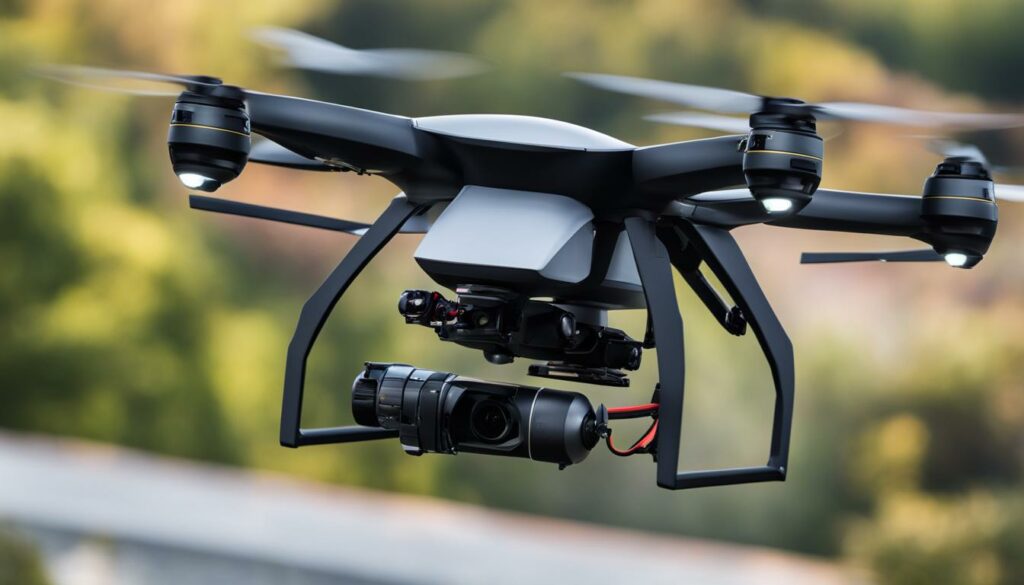
Table: Summary of Benefits of Auto-Orientation
| Benefits | Description |
|---|---|
| Flight Stabilization | Auto-orientation helps maintain the drone’s position and trajectory, even in windy conditions, leading to improved stability during flight. |
| Enhanced Safety | With the ability to automatically return to the starting point, auto-orientation minimizes the risk of accidents or crashes caused by loss of control. |
| Improved Control | By reducing the need for constant manual adjustments, auto-orientation allows pilots to focus on capturing footage or executing complex flight maneuvers. |
| Beginner-Friendly | Auto-orientation reduces the cognitive load on beginner pilots, making it easier for them to control the drone and capture the desired shots. |
When Is Auto-Orientation Useful?
Auto-orientation on a drone can be incredibly useful in various scenarios, especially when you need to keep the drone in a certain position or trajectory. Here are a few instances where auto-orientation comes in handy:
- Camera shots: If you’re looking to capture precise and steady camera shots, auto-orientation can help you maintain the desired position and angle, ensuring your footage turns out smooth and professional.
- Obstacle avoidance: Auto-orientation can assist in flying the drone safely and avoiding obstacles. By automatically adjusting its position, the drone can navigate around objects without direct manual control.
- Windy conditions: When flying in windy conditions, it can be challenging to keep the drone steady. Auto-orientation compensates for the wind’s effect, allowing you to focus on other aspects of your flight without worrying about maintaining the drone’s position.
However, it’s important to note that auto-orientation may not be as useful in certain situations. For example, if you need to fly the drone in a specific direction to reach a designated destination, you may need to disable the auto-orientation feature and take manual control. Additionally, if the GPS system is not functioning correctly or there are issues with the drone’s connectivity or power, auto-orientation may not be as reliable. Therefore, it’s crucial to ensure that the GPS system is working properly and that the drone remains within the range of the GPS signal for optimal performance.
Overall, auto-orientation can greatly enhance your drone flying experience, providing stability, control, and automated features that make it easier for beginners and experienced pilots alike to take breathtaking shots and navigate challenging environments.
When Is Auto-Orientation Not Useful?
Auto-orientation can be a useful feature for drone pilots, but there are situations where it may not be as beneficial. One such scenario is when you need to fly the drone in a specific direction. Auto-orientation is designed to keep the drone in a fixed position or trajectory, so it may not offer the level of control needed for precise directional flight. In these cases, it may be necessary to disable the auto-orientation feature and manually control the drone’s direction to reach a specific destination.
Additionally, if the GPS system is not functioning properly or there are issues with the drone’s connectivity or power, auto-orientation may not be as reliable. The feature relies on GPS signals to accurately maintain the drone’s position, so any disruptions to the GPS signal can affect its performance. It is important to ensure that the GPS system is working well and that the drone remains within the range of the GPS signal for optimal auto-orientation functionality.
Despite these limitations, auto-orientation can still be very beneficial, especially for beginners or pilots who want to focus on capturing footage without constantly adjusting the drone’s position. By being aware of its limitations and potential issues, drone pilots can make informed decisions about when to use auto-orientation and when manual control may be more appropriate.
| Pros | Cons |
|---|---|
| Enhances stability and control | Reduced control when precise directional flight is required |
| Increased safety and reduced risk of crashes or accidents | Reliability dependent on functioning GPS system and drone connectivity/power |
| Allows for focus on capturing footage or executing complex flight maneuvers | Potential limitations in windy conditions or adverse weather |
| Possible security risks associated with auto-orientation |
Benefits of Auto-Orientation
- Enhanced stability and control
- Increased safety and reduced risk of crashes or accidents
- Allows for focus on capturing footage or executing complex flight maneuvers
Limitations of Auto-Orientation
- Reduced control when precise directional flight is required
- Reliability dependent on functioning GPS system and drone connectivity/power
- Potential limitations in windy conditions or adverse weather
- Possible security risks associated with auto-orientation
Tips for Using Auto-Orientation Safely
When it comes to using auto-orientation on your drone, safety should always be a top priority. By following these tips, you can ensure a safe and enjoyable flying experience:
- Choose safe and controlled environments: Before using auto-orientation, make sure you are in an open area without any potential obstacles or hazards. This will minimize the risk of accidents and collisions.
- Be aware of your surroundings: Always keep an eye on your drone and be mindful of your surroundings. Avoid flying near people, buildings, or other sensitive areas. This will help prevent any potential accidents or privacy concerns.
- Monitor your drone’s battery level: Auto-orientation relies on power, so it’s important to keep a close eye on your drone’s battery level. Always land your drone before the battery runs out to prevent any unexpected crashes or loss of control.
- Keep your drone’s firmware up to date: Regularly update your drone’s firmware to ensure that the auto-orientation system is working properly. Firmware updates often include important stability and safety improvements, so it’s important to stay up to date.
Remember, auto-orientation is a great feature that enhances the stability and control of your drone. However, it’s important to use it responsibly and follow these safety tips to prevent any accidents or mishaps.
By prioritizing safety and taking precautionary measures, you can enjoy the benefits of auto-orientation while minimizing the risks associated with drone flying.
| Drone Safety Features | Drone Hardware |
|---|---|
| GPS system | Flight controller |
| Return to Home (RTH) function | Compass |
| Fail-safe mechanism | Gyroscope |
| Obstacle avoidance sensors | Accelerometer |
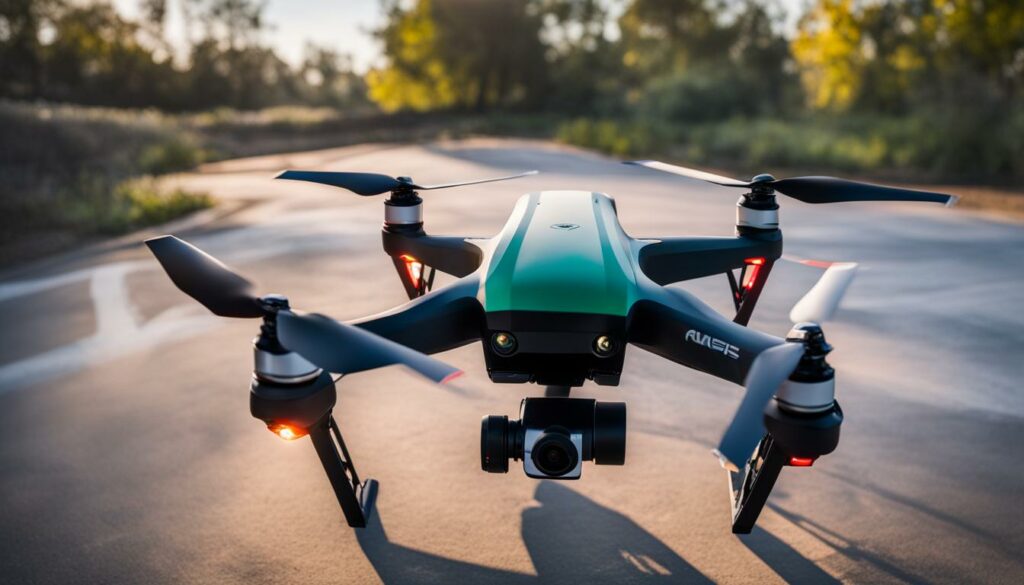
How Does Auto-Orientation Work on Drones?
The auto-orientation feature on drones relies on a combination of sensors, including the Inertial Measurement Unit (IMU), compass, and accelerometer. These sensors work together to provide crucial data on the drone’s position and orientation, allowing the drone’s flight controller to make the necessary adjustments to maintain the desired orientation.
The IMU sensor plays a crucial role in auto-orientation by measuring the drone’s rotational movements. It consists of a gyroscope that detects changes in angular velocity and an accelerometer that measures changes in linear motion. By combining the data from these sensors, the IMU can accurately determine the drone’s orientation in three-dimensional space.
Another key component of auto-orientation is the compass, which provides a reference direction for the drone. The compass helps the drone determine its heading and maintain a specific orientation relative to the Earth’s magnetic field. To ensure accurate readings, it’s essential to calibrate the compass regularly, following the manufacturer’s instructions.
Table: Sensors Used in Auto-Orientation
| Sensor | Function |
|---|---|
| IMU | Measures rotational and linear movements |
| Compass | Provides reference direction based on the Earth’s magnetic field |
| Accelerometer | Measures changes in linear motion |
“The IMU sensor and compass are essential components in the auto-orientation system of a drone. They work together with the flight controller to maintain the desired orientation and stability during flight.”
By utilizing these sensors and their data, the drone’s flight controller can adjust the speed and direction of the motors and propellers, allowing the drone to maintain its set orientation even in challenging conditions. Whether it’s compensating for wind gusts or external disturbances, the auto-orientation system ensures the drone stays on track and assists in capturing stable footage.
Understanding the mechanics of auto-orientation on drones is crucial for both beginner and experienced pilots. By comprehending how these sensors work together, pilots can make informed decisions during flight and leverage the auto-orientation feature to enhance their overall flying experience.
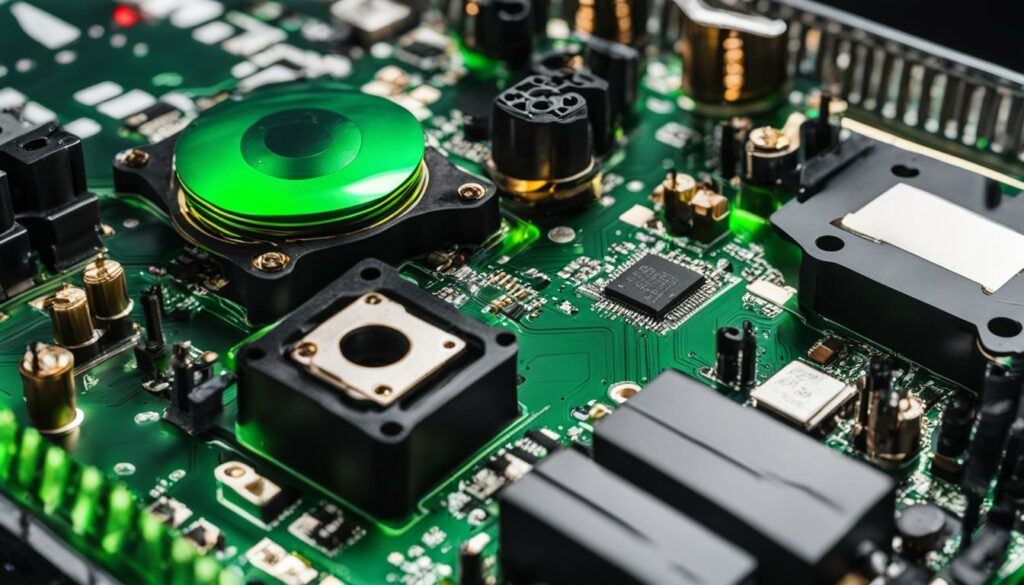
Benefits and Limitations of Auto-Orientation
Auto-orientation offers numerous benefits when it comes to drone control, flight stability, and obstacle avoidance. By utilizing this feature, you can experience improved control over your drone, allowing you to focus on capturing the perfect shot without constantly adjusting the drone’s position. Auto-orientation also enhances flight stability, especially in windy conditions, reducing the chances of the drone being affected by external factors and ensuring smooth, steady flights.
In terms of safety, auto-orientation plays a crucial role. With this feature enabled, your drone can automatically return to its starting point if it loses connection with the controller or experiences a loss of power. This not only protects your investment but also prevents the drone from crashing or getting lost. Additionally, auto-orientation enhances obstacle avoidance capabilities, making it easier to maneuver the drone and avoid potential collisions.
However, it’s essential to be aware of the limitations of auto-orientation. While it offers increased stability and control, it may also result in reduced manual control over the drone. This means that if you need precise control over the drone’s direction or trajectory, auto-orientation may not be the ideal option. Additionally, relying heavily on auto-orientation can result in increased power consumption, reducing the overall flight time of your drone. It’s crucial to find the right balance between utilizing auto-orientation and maintaining manual control based on your specific flying needs.
| Benefits of Auto-Orientation | Limitations of Auto-Orientation |
|---|---|
| Improved control | Reduced manual control |
| Increased flight stability | Increased power consumption |
| Enhanced safety | Security risks |
| Expanded obstacle avoidance |
Table: Benefits and Limitations of Auto-Orientation
“Auto-orientation enhances the stability and control of the drone, making it easier for the pilot to focus on capturing footage or executing complex flight maneuvers.” – Drone Enthusiast
Future Developments in Auto-Orientation
As drone technology continues to advance, we can expect to see further developments in auto-orientation. With advancements in sensors, data processing, and control algorithms, auto-orientation systems are likely to become more sophisticated and reliable. These technological advancements will enhance the stability and control of drones, allowing for smoother flights and more precise positioning.
One area of development is the improvement of GPS technology. More accurate and responsive GPS systems will enable drones to have a stronger lock on their position, even in challenging environments. This will result in better auto-orientation performance, making it easier for pilots to maintain a desired position or trajectory. Additionally, advancements in GPS technology will further enhance features like return to home functions, ensuring drones can safely navigate back to their starting point.
Another area of focus for future developments is the enhancement of drone software. Improvements in software algorithms will enable drones to better analyze and interpret data from sensors, allowing for more precise adjustments in real-time. This will lead to smoother auto-orientation control and increased stability, even in varying wind conditions. Additionally, future software updates may introduce new flight modes and customization options, giving pilots more control and flexibility when utilizing the auto-orientation feature.
Furthermore, future developments may also include the integration of artificial intelligence (AI) technology into auto-orientation systems. AI algorithms can analyze vast amounts of data and make autonomous decisions based on various factors. By implementing AI into auto-orientation, drones could potentially adapt to changing conditions and optimize their flight paths for increased efficiency and safety. This could revolutionize the way drones navigate and interact with their environment, opening up new possibilities for drone applications in industries such as delivery services and surveillance.
Table: Future Developments in Auto-Orientation
| Development | Description |
|---|---|
| Improved GPS Technology | Advancements in GPS technology will enhance the accuracy and responsiveness of drone positioning, leading to better auto-orientation performance. |
| Enhanced Drone Software | Software updates will introduce improved algorithms for real-time data analysis, resulting in smoother auto-orientation control and increased stability. |
| Integration of AI Technology | Implementing AI algorithms into auto-orientation systems could enable drones to adapt to changing conditions and optimize flight paths for increased efficiency and safety. |
Conclusion
Auto-orientation is a valuable feature that enhances the stability, control, and safety of drone flights. It allows the drone to maintain its position, adjust for wind and other external factors, and return to its starting point if necessary.
Auto-orientation is particularly beneficial for aerial photography and videography, as it helps capture steady shots and avoid obstacles. By understanding auto-orientation and using it responsibly, you can take your flying experience to new heights.
As technology advances, we can expect auto-orientation systems to become even more sophisticated and widely used, further enhancing the capabilities of drones. With improved sensors, data processing, and control algorithms, the future of auto-orientation looks bright.
By incorporating auto-orientation into your drone’s flight controls and navigation system, you can have greater control, stability, and maneuverability in the air. So, embrace this innovative feature and enjoy the incredible possibilities it brings to your drone flights.
FAQ
What is auto-orientation on a drone?
Auto-orientation is a valuable feature found in many drones that allows the drone to maintain its position in relation to the ground or other reference points. It relies on a GPS system to accurately track the drone’s position and keep it on the desired trajectory.
How does auto-orientation work?
Auto-orientation works by using a combination of sensors, including a compass, gyroscope, and accelerometer. These sensors provide data on the drone’s position and orientation, which is then used by the drone’s flight controller to calculate the necessary control inputs to maintain the desired orientation.
What are the benefits of auto-orientation?
The benefits of auto-orientation include improved control, increased stability in windy conditions, enhanced safety, and expanded capabilities. It makes flying a drone easier and more enjoyable, especially for beginners.
When is auto-orientation useful?
Auto-orientation is useful when you need to keep the drone in a certain position or trajectory. It is beneficial for maintaining camera shots, avoiding obstacles, and flying in windy conditions.
When is auto-orientation not useful?
Auto-orientation may not be as useful when you need to fly the drone in a specific direction or when the GPS system is not working well. It may not be suitable for specific direction control or when there are technical issues with the drone.
What are some tips for using auto-orientation safely?
To use auto-orientation safely, only use it in safe and controlled environments, be aware of your surroundings and avoid flying near obstacles, monitor the drone’s battery level closely, keep the drone’s firmware up to date, and be aware of security risks associated with auto-orientation.
How does auto-orientation work on drones?
Auto-orientation on drones works by using a combination of sensors, including a compass, gyroscope, and accelerometer. These sensors provide data on the drone’s position and orientation, which is then used by the drone’s flight controller to maintain its orientation.
What are the benefits and limitations of auto-orientation?
The benefits of auto-orientation include improved control, increased stability, and enhanced safety. However, there are limitations such as reduced control, increased power consumption, reduced reliability, and security risks to consider.
What are some future developments in auto-orientation?
As drone technology continues to advance, we can expect further developments in auto-orientation. Advancements in sensors, data processing, and control algorithms will make auto-orientation systems more sophisticated and reliable, enhancing the stability, control, and overall flying experience for drone enthusiasts.
What is the conclusion on auto-orientation on a drone?
Auto-orientation is a valuable feature that enhances the stability, control, and safety of drone flights. It allows the drone to maintain its position, adjust for wind and other external factors, and return to its starting point if necessary. By understanding auto-orientation and using it responsibly, drone pilots can take their flying experience to new heights.


